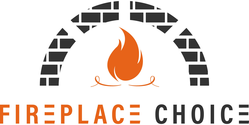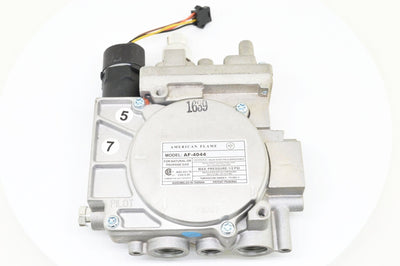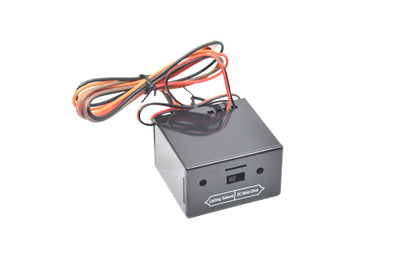How To Install Electric Blower Fireplace
how to install electric blower fireplace?

Is your electric fireplace not providing enough warmth despite being on? Many people face this issue and find that adding a blower can significantly enhance the heat distribution. This guide will take you through the simple steps to install an electric blower in your fireplace, making your home cozier.
Keep reading to learn how easy it is!
Key Takeaways
- Ensure the fireplace and blower kit are compatible by checking measurements, power specifications, and including necessary connections like thermostat sensors.
- Gather all essential tools ahead of time, such as screwdriver sets, pliers, wire strippers, drills, electrical tape, and insulation materials for a smooth installation process.
- Disconnect both power and gas lines to ensure safety before starting any wiring or mounting tasks associated with installing the electric blower.
- Follow clear instructions to mount the new blower securely using a mounting bracket. Reconnect all electrical components properly to ensure efficient operation.
- Test the blower after installation by turning it on and listening for unusual noises. Check airflow distribution across the room to confirm proper functionality.
Pre-Installation Steps

Check the compatibility of your fireplace and blower kit. Gather all necessary tools like screwdrivers, electrical wires, and insulating materials.
Ensure Fireplace and Blower Kit Compatibility
Ensure the fireplace and blower kit fit together before starting. Measure the space where the blower will go. Look at your fireplace's manual to check for compatible accessories. This avoids problems later, such as improper fitting or malfunctioning of components.
Examine the power and wiring specifications of both your fireplace and blower kit. A mismatch can cause electrical issues or even damage both units. Verify that all necessary connections like thermostat sensors are included in the blower kit.
Proper wiring helps your heater run efficiently, maintaining a warm atmosphere throughout your home without any hitches.
Gather Necessary Tools and Materials
Gather the tools and materials before starting the installation. This will save time and ensure you have everything needed for a smooth process.
- Screwdriver Set: Use these to unscrew the mounting bracket of the blower. A variety of sizes might be needed.
- Shop Vac: Clean out debris from the old blower space with this vacuum for a clean working area.
- Pliers: Helpful for handling wires during electrical connections.
- Wire Strippers: Needed to prepare electrical wiring by stripping the ends of wires.
- Drill: Useful for creating holes if necessary to mount components securely in place.
- Electrical Tape: Insulate wire connections safely with this tape.
- Blower Kit and Mounting Bracket: Ensure compatibility with your fireplace insert. These kits include power cords, thermostat sensors, and variable speed controllers.
- Replacement Blower Motor: Choose an appropriate blower motor that fits your electric fireplace model.
- Thermostat Sensor and Rheostat Controller: Control the temperature and speed settings of your blower fan with these components.
- Gloves and Safety Goggles: Wear these for protection while handling tools and materials.
Organize these items nearby as you work on installing the electric blower fireplace in basements, crawl spaces, or other locations within the house to make heating systems more efficient.
Installation Steps

Shut off all power and gas lines before beginning. Install the blower by following the wiring guide in your manual.
Disconnect Power and Gas Supply
Turn off the power source to avoid accidents during the installation. Unplug all power cords connecting the fireplace blower and thermostat sensors first. Locate your home's main electrical panel and flip the switch that controls the electricity to your fireplace.
Shut off the gas supply valve connected to your heaters or HVAC system, preventing gas leaks while working on the fireplace. Safely disconnect any gas lines running to nearby stoves or furnaces.
After these steps, you can proceed with installing electrical wiring and receptacle for your electric blower fireplace.
Install Electrical Wiring and Receptacle
After disconnecting the power and gas supply, start with installing the electrical wiring and receptacle. Make sure to unplug any existing fireplace blower first. Carefully run new wires from your main power source to the installation area of the electric blower fireplace.
Use a voltage tester to ensure there’s no live current in any wires you’ll be handling.
Next, install a proper receptacle for your blower kit’s plug. Attach thermostat sensors and rheostat variable speed controllers according to their specific instructions. Ensure all connections are secure and well-insulated using appropriate tools such as wire strippers, screwdrivers, and pliers.
Avoid unnecessary jargon by keeping instructions clear-cut: “Run” instead of “navigate,” “handle securely” instead of “meticulously operate.” Remember safety is paramount; always double-check connections before proceeding further into mounting components or testing operations in heating systems like fireplaces or HVAC setups.
Mount the Blower and Reconnect Components
Remove the existing plate and take out the old blower. Clean up any dust or debris left behind. Securely mount the new blower using the provided mounting bracket. Make sure to follow your kit instructions closely.
Reconnect all electrical connections, including power cords, thermostat sensors, and rheostat variable speed controllers. Ensure everything is securely in place before testing. Plug in the fireplace blower and turn it on to check if it's operating correctly.
Post-Installation Check
Switch on the electric fireplace to test the blower operation. Verify that it distributes warm air evenly across the room.
Test the Blower Operation
Turn on the blower to ensure it operates correctly. Listen for any unusual noises like grinding or rattling, which could indicate a problem. Feel the airflow coming out from the vents and check if it's even and strong.
Adjust the rheostat variable speed controller to see if you can change the fan speed smoothly.
Observe if heat distribution improves in your room with proper insulation and ventilation systems in place. Ensure there are no vibrations when running at different speeds, as this might suggest improper mounting or loose screws.
Choosing the Right Electric Fireplace
Selecting the ideal electric fireplace involves considering a few critical aspects. First, measure your living room to determine the suitable size and heating capacity for your needs.
Small rooms benefit from compact units, while larger spaces demand more powerful models. Electric fireplaces come with various features like energy-efficient settings, remote controls, and customizable flame effects that enhance interior design.
Look for options offering easy installation without extensive carpentry or electrical work. Ensure compatibility with existing windows and walls in your home layout. Consider models that include fireplace inserts for added convenience and functionality.
Checking user reviews can also provide insights into reliability and performance before making a final decision.
Conclusion
### How to Install an Electric Blower Fireplace
Installing an electric blower fireplace is a straightforward task if you follow the steps carefully. Ensure that your fireplace and blower kit are compatible before starting. Gather all necessary tools, such as screwdrivers, wire cutters, and safety glasses.
Begin by disconnecting the power supply to avoid any accidents. Next, install the electrical wiring and receptacle nearby for easy access. Mount the blower securely in its designated spot and reconnect all components as directed.
After installation, it's crucial to test the blower operation to make sure it works properly. Listen for unusual noises and check if heat circulates efficiently into the room.
Choose a suitable electric fireplace model that complements your home décor while providing energy-efficient warmth without real flames. Make sure it fits well within your existing space or new renovation plans involving flooring or framing adjustments.
FAQs
1. What tools do I need to install an electric blower fireplace?
You will need basic tools like a screwdriver, drill, and measuring tape. Also, have safety gear such as gloves and goggles.
2. Can I install an electric blower fireplace in my attic?
Yes, you can install it in your attic if there is proper ventilation and framing support.
3. How does an electric blower fireplace improve energy efficiency?
An electric blower helps distribute heat more evenly, making your home more energy efficient by reducing the need for additional heating appliances like air conditioning or hot water systems.
4. Do I need to modify my chimney for installation?
No modifications are usually needed for chimneys when installing an electric blower fireplace since it doesn't produce smoke or fumes.
5. Is professional help required to install the unit?
While it's possible to do it yourself with some DIY skills, hiring a professional ensures safe installation and adherence to local codes related to flooring and roofing structures.
6. Can I use this type of fireplace in green living homes?
Yes! Electric blower fireplaces are great for green living because they don't emit harmful gases and often come with energy-efficient settings that align well with eco-friendly practices.
← Older Post Newer Post →





















